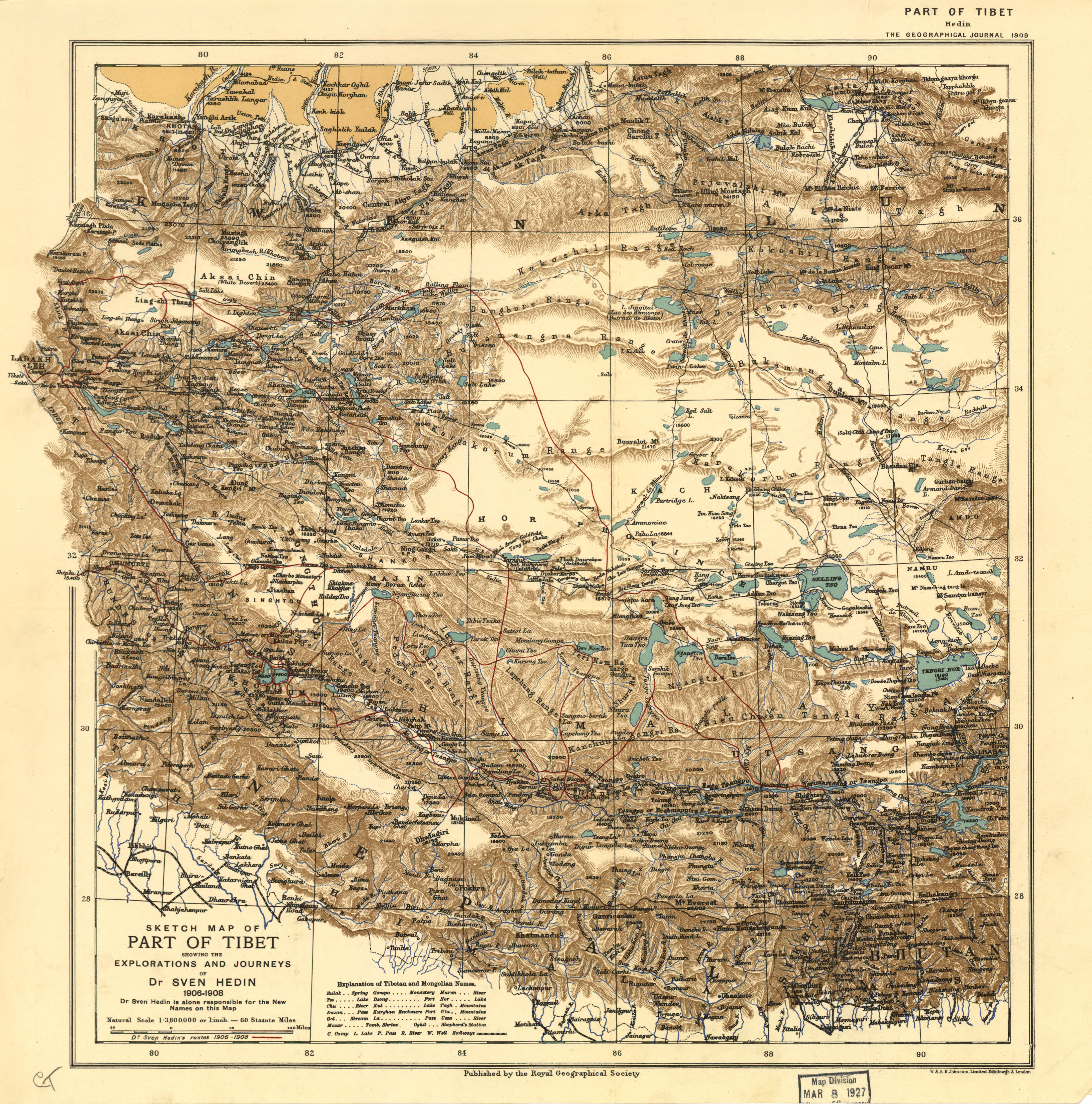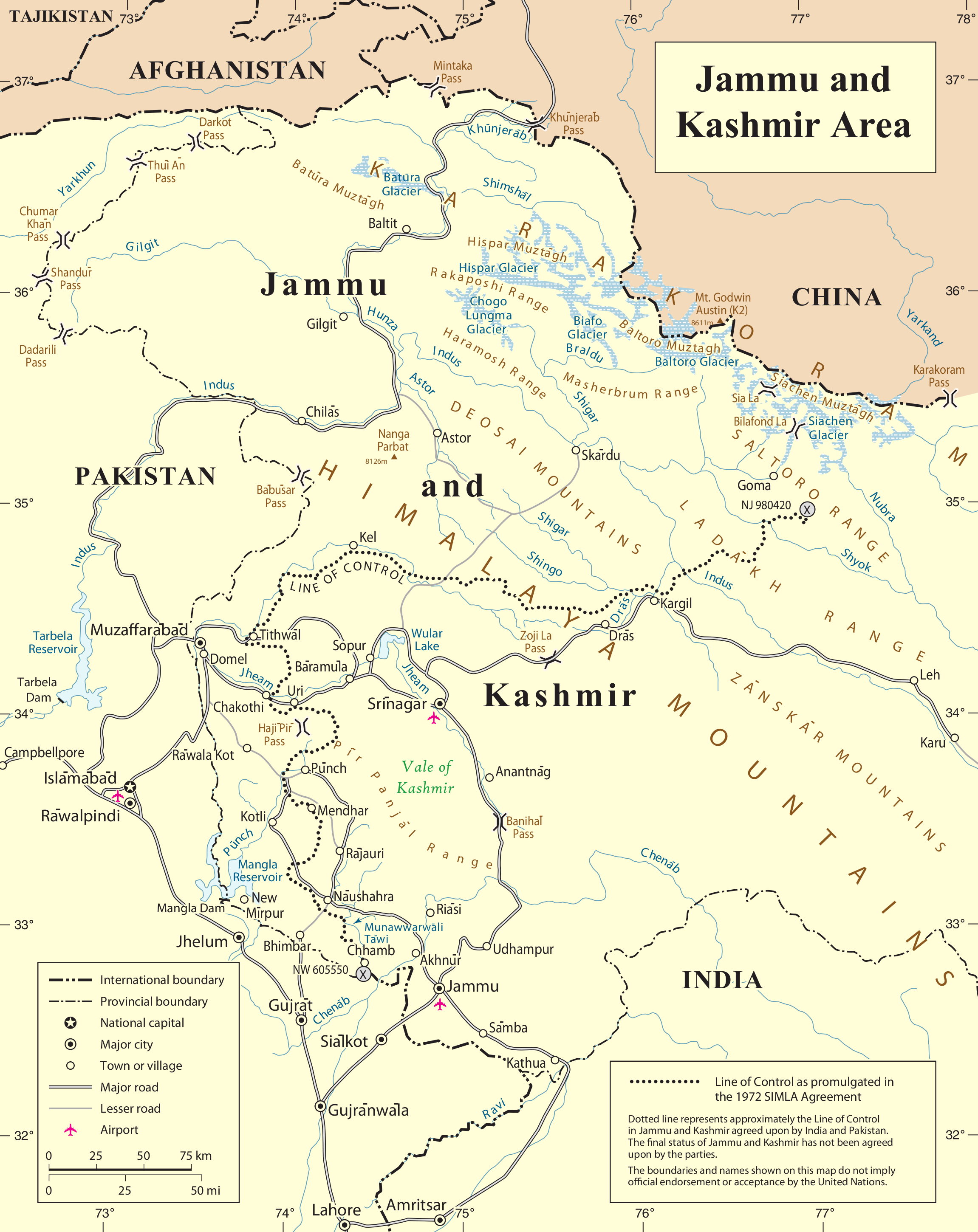|
Daulat Beg Oldi
Daulat Beg Oldi (also Oldie, DBO) is a traditional campsite and current military base located in the midst of the Karakoram Range in northern Ladakh, India. It is on the historic trade route between Ladakh and Central Asia, forming the last campsite before reaching the Karakoram Pass. It is said to be named after Sultan Said Khan ("Daulat Beg"), who died here on his return journey after an invasion of Ladakh and Kashmir. Chip Chap River, the main headwater of the Shyok River, flows just to the south. The Line of Actual Control with Chinese-controlled Aksai Chin is 5 miles to the east. An Indian border outpost was established here in summer 1960 and remains till this day. An Advance Landing Ground was also constructed here, which is famed as one of the world's highest airstrips. DBO now has a road link, the 235 km-long Darbuk-Shyok-DBO Road, completed by the Border Roads Organisation in 2019 on a new improved alignment. [...More Info...] [...Related Items...] OR: [Wikipedia] [Google] [Baidu] |
Indian Air Force
The Indian Air Force (IAF) is the air arm of the Indian Armed Forces. Its complement of personnel and aircraft assets ranks third amongst the air forces of the world. Its primary mission is to secure Indian airspace and to conduct aerial warfare during armed conflict. It was officially established on 8 October 1932 as an auxiliary air force of the British Empire which honoured India's aviation service during World War II with the prefix ''Royal''. After India gained independence from United Kingdom in 1947, the name Royal Indian Air Force was kept and served in the name of Dominion of India. With the government's transition to a Republic in 1950, the prefix ''Royal'' was removed. Since 1950, the IAF has been involved in four wars with neighbouring Pakistan. Other major operations undertaken by the IAF include Operation Vijay, Operation Meghdoot, Operation Cactus and Operation Poomalai. The IAF's mission expands beyond engagement with hostile forces, with the IAF particip ... [...More Info...] [...Related Items...] OR: [Wikipedia] [Google] [Baidu] |
Chagatai Language
Chagatai (چغتای, ''Čaġatāy''), also known as ''Turki'', Eastern Turkic, or Chagatai Turkic (''Čaġatāy türkīsi''), is an extinct Turkic literary language that was once widely spoken across Central Asia and remained the shared literary language there until the early 20th century. It was used across a wide geographic area including parts of modern-day Uzbekistan, Xinjiang, Kazakhstan, and Kyrgyzstan. Literary Chagatai is the predecessor of the modern Karluk branch of Turkic languages, which include Uzbek and Uyghur. Turkmen, which is not within the Karluk branch but in the Oghuz branch of Turkic languages, had been heavily influenced by Chagatai for centuries. Ali-Shir Nava'i was the greatest representative of Chagatai literature. Chagatai literature is still studied in modern Uzbekistan, where the language is seen as the predecessor and the direct ancestor of modern Uzbek and the literature is regarded as part of the national heritage of Uzbekistan. Etymol ... [...More Info...] [...Related Items...] OR: [Wikipedia] [Google] [Baidu] |
Map India And Pakistan 1-250,000 Tile NI 43-4 Chulung
A map is a symbolic depiction emphasizing relationships between elements of some space, such as objects, regions, or themes. Many maps are static, fixed to paper or some other durable medium, while others are dynamic or interactive. Although most commonly used to depict geography, maps may represent any space, real or fictional, without regard to context or scale, such as in brain mapping, DNA mapping, or computer network topology mapping. The space being mapped may be two dimensional, such as the surface of the earth, three dimensional, such as the interior of the earth, or even more abstract spaces of any dimension, such as arise in modeling phenomena having many independent variables. Although the earliest maps known are of the heavens, geographic maps of territory have a very long tradition and exist from ancient times. The word "map" comes from the , wherein ''mappa'' meant 'napkin' or 'cloth' and ''mundi'' 'the world'. Thus, "map" became a shortened term referring to ... [...More Info...] [...Related Items...] OR: [Wikipedia] [Google] [Baidu] |
China West 1906-08 Sven Hedin
China, officially the People's Republic of China (PRC), is a country in East Asia. It is the world's List of countries and dependencies by population, most populous country, with a Population of China, population exceeding 1.4 billion, slightly ahead of India. China spans the equivalent of five time zones and Borders of China, borders fourteen countries by land, the List of countries and territories by land borders, most of any country in the world, tied with Russia. Covering an area of approximately , it is the world's third List of countries and dependencies by area, largest country by total land area. The country consists of 22 provinces of China, provinces, five autonomous regions of China, autonomous regions, four direct-administered municipalities of China, municipalities, and two special administrative regions of China, Special Administrative Regions (Hong Kong and Macau). The national capital is Beijing, and the List of cities in China by population, most populous cit ... [...More Info...] [...Related Items...] OR: [Wikipedia] [Google] [Baidu] |
Siachen Glacier
The Siachen Glacier is a glacier located in the eastern Karakoram range in the Himalayas at about , just northeast of the point NJ9842 where the Line of Control between India and Pakistan ends. At long, it is the longest glacier in the Karakoram and second-longest in the world's non-polar areas. It falls from an altitude of 5,753 m (18,875 ft) above sea level at its head at Indira Col on the India–China border down to 3,620 m (11,875 ft) at its terminus. The entire Siachen Glacier, with all major passes, has been under the administration of India (currently as part of the union territory of Ladakh, located in the Kashmir region) since 1984. Pakistan maintains a territorial claim over the Siachen Glacier and controls the region west of Saltoro Ridge, lying west of the glacier, with Pakistani posts located 3,000 ft below more than 100 Indian posts on the ridge. The Siachen Glacier lies immediately south of the great drainage divide that separat ... [...More Info...] [...Related Items...] OR: [Wikipedia] [Google] [Baidu] |
Depsang Plains
The Depsang Plains represent a high-altitude gravelly plain at the northwest portion of the disputed Aksai Chin region of Kashmir, divided into Indian and Chinese administered portions across a Line of Actual Control. India controls the western portion of the plains as part of Ladakh, whereas the eastern portion is controlled by China and claimed by India. The Line of Control with Pakistan-administered Gilgit-Baltistan is west of the Depsang Plains with the Siachen Glacier in-between. Ladakh's traditional trade route to Central Asia passed through the Depsang Plains, with the Karakoram Pass lying directly to its north. The Depsang plains are also part of the area called Sub-Sector North (SSN) by the Indian military. The area sees frequent tension between China and India. Major standoffs between two countries occurred in 2013, 2015 and 2020. Name ''Depsang'' (or ''Dipsang'') in Tibetan means 'open, elevated plain'. Geography The Depsang Plains are located in the no ... [...More Info...] [...Related Items...] OR: [Wikipedia] [Google] [Baidu] |
Karakoram Range
The Karakoram is a mountain range in Kashmir region Kashmir () is the northernmost geographical region of the Indian subcontinent. Until the mid-19th century, the term "Kashmir" denoted only the Kashmir Valley between the Great Himalayas and the Pir Panjal Range. Today, the term encompas ... spanning the borders of Pakistan, China, and India, with the northwest extremity of the range extending to Afghanistan and Tajikistan. Most of the Karakoram mountain range falls under the jurisdiction of Gilgit-Baltistan, which is controlled by Pakistan. Its highest peak (and List of highest mountains on Earth#List of world's highest peaks, world's second-highest), K2, is located in Gilgit-Baltistan. It begins in the Wakhan Corridor (Afghanistan) in the west, encompasses the majority of Gilgit-Baltistan, and extends into Ladakh (controlled by India) and Aksai Chin (controlled by China). It is the Greater Ranges, second-highest mountain range in the world and part of the comp ... [...More Info...] [...Related Items...] OR: [Wikipedia] [Google] [Baidu] |
Karakash River
The Karakash or Black Jade River, also spelled ''Karakax'' (, , Қарақаш Дәряси), is a river in the Xinjiang autonomous region of the People's Republic of China that originates in the disputed Aksai Chin region administered by China. It passes through the historical settlement of Xaidulla (Shahidulla or Saitula) and passes by the city of Khotan (Hotan) to flow northeast in the Tarim Basin. It merges with the Yurungkash River, the combined river taking the name Hotan River and flowing into the Tarim River. Course The river begins above about northeast of Galwan Kangri peak in the disputed Aksai Chin region administered by China. It flows north to Sumnal (15,540 ft), then turns sharply eastwards, flowing at the foot of the Karatagh Range (skirting just north of the Soda Plains of Aksai Chin). Just beyond Palong Karpo, it reaches the foot of the Kunlun Mountains, where it turns sharply northwestwards, and crosses into Xinjiang proper. At this location it receive ... [...More Info...] [...Related Items...] OR: [Wikipedia] [Google] [Baidu] |





